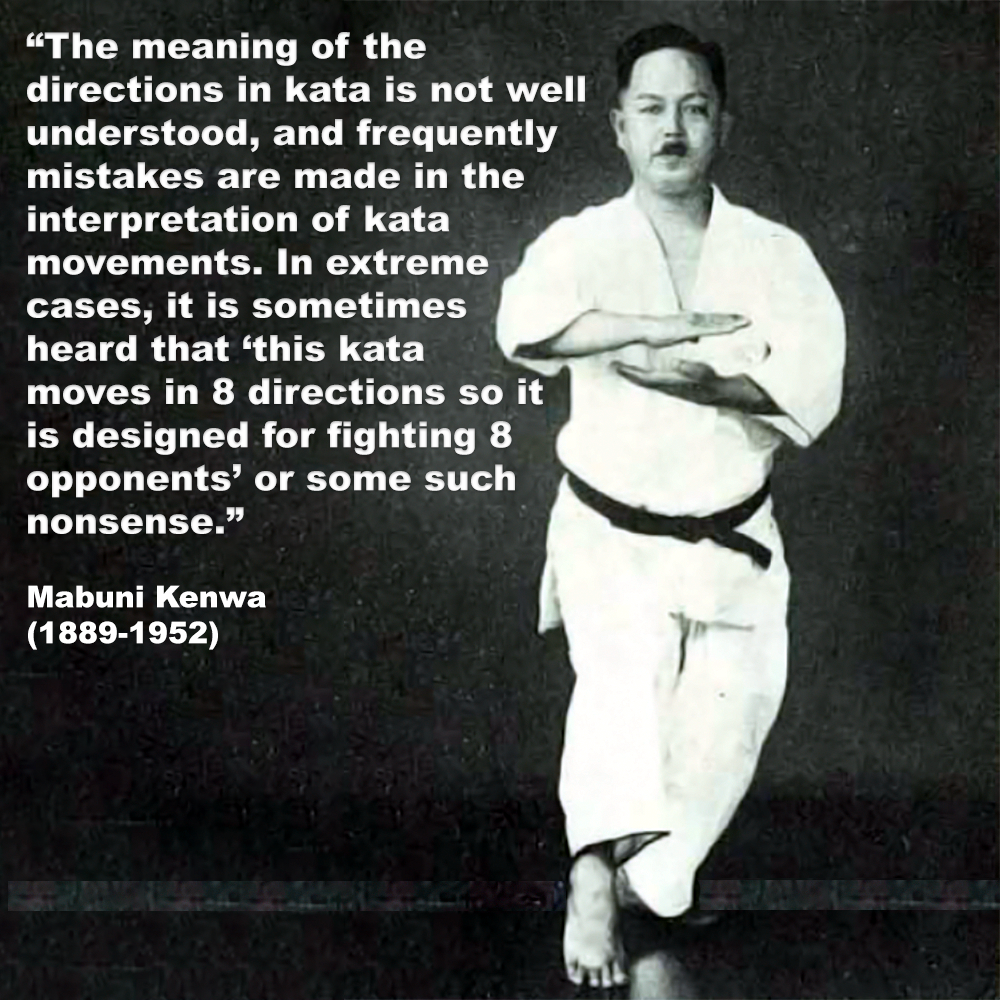
"The meaning of the directions in kata is not well understood, and frequently mistakes are made in the interpretation of kata movements." - Mabuni Kenwa (1889-1952)
Posted by ADAM CARTER on MAR 16, 2023

"The meaning of the directions in kata is not well understood, and frequently mistakes are made in the interpretation of kata movements." - Mabuni Kenwa (1889-1952)
Enbusen (演武線 - embusen) is a term commonly used in the martial arts world. In its simplest form it refers to the pattern or shape of the movements that make up a particular kata.
The enbusen of a kata is an important aspect of its execution, as it provides a visual representation of the intended movements and helps to ensure that the techniques are executed with the correct angles, distances, and timing.
The enbusen is typically represented by a diagram or chart that shows the path of the practitioner's movements. This diagram can take different forms, depending on the style of martial art and the specific kata being practiced. In some cases, the enbusen may be a simple straight line, while in others it may be more complex and incorporate multiple turns, angles, and changes of direction.
By following the enbusen, a practitioner can ensure that they are moving in the correct direction, using the right stances and footwork, and maintaining the appropriate distance from their opponent.
In addition to helping with technique and form, the enbusen of a kata can also have important practical applications in a self-defense context. For example, by understanding the embusen of a particular kata, a practitioner can better visualize how the movements might be used in a real-world self-defense situation. This can help them to develop a better sense of how to apply the techniques effectively and efficiently in a real-world scenario.
Getting off the enemy’s line of attack, while keeping them on yours, is a good idea. And this is recorded in the kata. There is only one way to demonstrate this: by illustrating the angle relevant to yourself. There is no alternative way to record the angle between you and an attacker, when the attacker is not there to demonstrate it directly. The combination of these angles, will create the floor pattern of the kata.
Many Japanese-influenced kata start and end on exactly the same point (kiten - 起点). However, the idea that you need to start and finish on the same place serves no practical purpose and therefore would never have been a consideration when the kata were created.
Understand that ‘kiten’ is a modern consideration that has no historical or practical foundation. Ending up in the same spot was never a consideration when the kata were created. It is something that has risen up relatively recently and it’s a mistake to see it as being somehow fundamental to the way the kata have been constructed….. And there are many styles of karate where their kata specifically do not begin an end on the same spot.
The enbusen is there in order to communicate, record and rehearse combative applications, it primarily records the angle we assume in relation to an attacker. Don’t be deceived into thinking that this is the line that the enemy is attacking from. It does not represent turning to face an opponent or several opponents.
In conclusion, the enbusen is not simply the line you follow to complete the solo representation of a kata. It informs us the angle to which you must take relative to the opponent for the technique to work at its optimum.
“The meaning of the directions in kata is not well understood, and frequently mistakes are made in the interpretation of kata movements. In extreme cases, it is sometimes heard that ‘this kata moves in 8 directions so it is designed for fighting 8 opponents’ or some such nonsense.” - Mabuni Kenwa (1889-1952)
